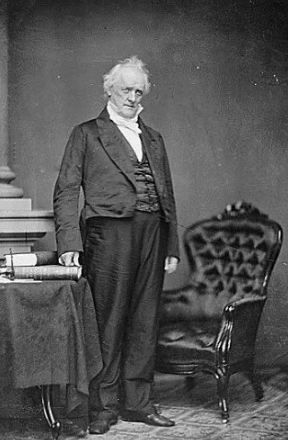James Buchanan served as the fifteenth president of the United States of America from 1857 until 1861. He was a Democrat from Pennsylvania and was inaugurated on March 4, 1857. During his tenure, he presided over a rapidly dividing nation; thus, he failed to understand that Northern states would never accept any constitutional arguments favoring the South, which could have averted the Civil War.
Dred Scott Decision
Two days after James Buchanan was inaugurated, the United States Supreme Court rendered its decision over the case of Dred Scott. His owner took Dred Scott to Illinois and Wisconsin Territory with his owner, an army surgeon. He claimed that moving to a Free State and territory made him a free man.
Dred Scott was not recognized as a citizen of the United States of America because of his skin color. He also does not have any right to sue
for freedom under the constitution.
The court decision was strongly influenced by James Buchanan, who urged the north to join the southern members, without realizing that it would implicate in the decision and be criticized by those who opposed it.
It made the beginning of his presidency bitter and rough. He appointed moderates as his cabinet members to avoid sectional extremists with an aggressive plan to reduce the tension. It led the country to divide further because of the Republicans’ political system, antislavery advocates, and the Democrats, who attempted to defend slavery and states’ rights.
Lecompton Constitution
James Buchanan attempted to persuade Kansas voters to favor and accept the Lecompton Constitution, which would permit slavery in the Kansas territory. During his administration, there were a series of violent negotiations known as the “Bleeding Kansas.” Kansas rejected it, and on January 29, 1861, it was admitted to the Union as a free state.
Utah War
Many Mormons settled in Utah decades before James Buchanan preceded in the White House. During the leadership of Brigham Young, Mormons became hostile towards federal intervention. He even harassed federal officials and dispelled outsiders from settling in Salt Lake Area.
Eventually, the Mormons rebelled against the United States and forced James Buchanan to send an army in November 1857 to replace Brigham Young with a non-Mormon governor. Soon, James Buchanan dispatched Thomas L. Kane to negotiate peace. He successfully changed the governor, ended the Utah War, and granted all residents who would respect the government’s authority.
Minnesota and Oregon Joined the Union
On May 11, 1858, Minnesota was admitted by the Republican-controlled Congress as the thirty-second state and a free state. The approval of Congress was delayed for several months because of the Kansas controversy.
On February 14, 1859, Oregon was admitted as the thirty-third state in the Union.
Foreign Affairs
James Buchanan’s foreign plan concentrated on the Caribbean, where he hoped to annex Cuba and worried many Northerners due to the possibility of making it an arena to expand slavery. His ambition to acquire Cuba and Mexico was obstructed in the Congress, where antislavery advocates strongly opposed the procurement of new slave territory.
Also, James Buchanan commissioned William Bradford Reed as Minister to China. He successfully negotiated the Treaty of Tientsin, which granted American diplomats to live in Peking, reduce American goods’ tariff levels, and assured the free exercise of faith by foreigners in China.
Southern Commercial Convention
On March 12, 1859, many southern slave owners attended the Southern Commercial Convention held in Vicksburg, Mississippi, which intends to promote the economic development of the South; however, they advocated the reopening of the African slave trade; however, the Congress banned the slave trade in 1808.
John Brown’s Armed Rebellion
John Brown was a fiery abolitionist and prompted the rouse of slave revolt by arming them with guns and spears to initiate an all-out war with the whites. He raided Harper’s Ferry in Virginia together with twenty men, including five blacks, to establish an abolitionist republic. John Brown was unsuccessful. James Buchanan sent federal troops led by Colonel Robert E. Lee and Lieutenant J.E.B to capture John Brown’s militia.
John Brown was captured and hanged in Charles Town, Virginia, for treason, murder, and conspiracy against Virginia.
South Carolina Seceded
South Carolina began its secession movement, and it was explosive. The secession convention was held on December 20, 1860, and the legislature voted unanimously to secede from the United States. James Buchanan refused to respond with force and attempted to negotiate in a diplomatic way to keep South Carolina from seceding; however, they never agreed. He then ordered Major Robert Anderson to vacate Fort Moultrie and move to the isolated Fort Sumter in Charleston harbor.
In James Buchanan’s cabinet, Southerners resigned after he did not lift a finger and left the Fort Sumter incident to his succeeding president, Abraham Lincoln, and threw his administration in disarray.
James Buchanan’s indecisiveness and a strong disposition to compromise with the secessionists and enabled the new Confederate government to begin its operation.
US Presidents | ||

